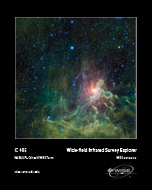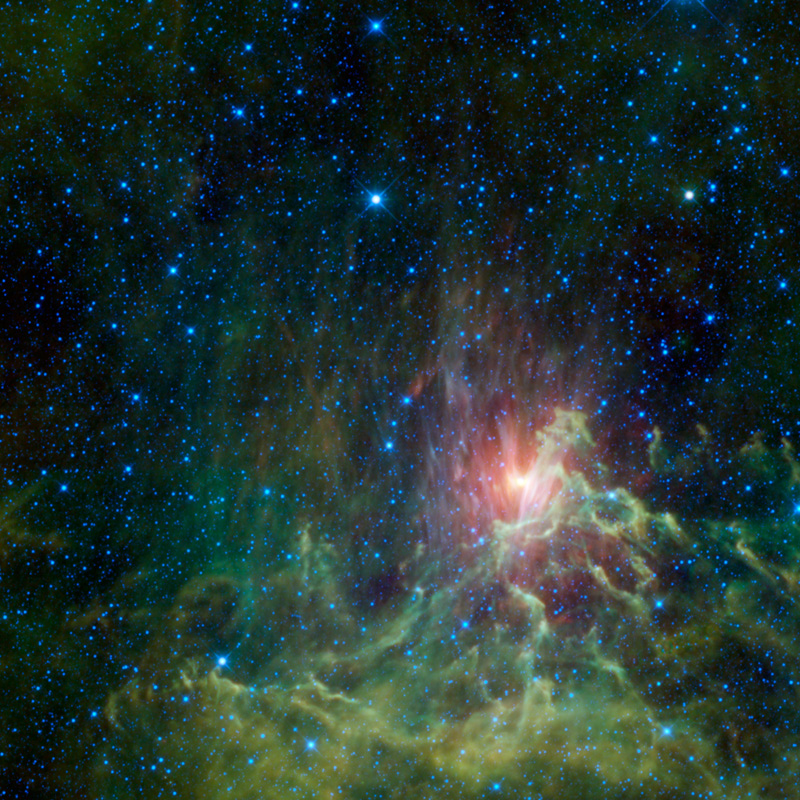



|
Nov 23, 2010 - WISE Catches a Runaway Star in Flames At a time of year when many people travel long distances to be with their families for the holidays, NASA’s Wide-field Infrared Survey Explorer, or WISE, captured this view of a runaway star racing away from its original home. Seen here surrounded by a glowing cloud of gas and dust, the star AE Aurigae appears to be on fire. Appropriately, the cloud is called the Flaming Star Nebula. A runaway star is one that is hurled into high-speed motion through a supernovae explosion or collision with nearby stars. Like an angry teenager who storms out of the house after a family fight, runaway stars are ejected from their birthplace and race off to other parts of the Galaxy. The runaway star AE Aurigae was likely born in Trapezium Cluster, which is located in the constellation Orion. It formed a binary star system with the star Mu Columbae. Approximately 2.5 million years ago, these two stars collided with another binary star system in the Trapezium Cluster. This collision sent both AE Aurigae and Mu Columbae hurtling through space in opposite directions at a speed of 100 kilometers per second. Today, AE Aurigae can be seen in the constellation Auriga, while its former binary star Mu Columbae is located in the constellation Columba. The wind from AE Aurigae blows away electrons from the gas surrounding it. This ionized gas begins to emit light, creating what is known as an emission nebula. The star also heats up nearby dust, causing it to glow in infrared wavelengths. As seen in visible light, this dust reflects the light of nearby stars, so it is called a reflection nebula. The colors seen in this image represent specific wavelengths of infrared light. Hot stars scattered throughout the image show up as blue and cyan. Blue represents light emitted at wavelengths of 3.4 microns, while cyan represents 4.6 microns. The gas of the emission nebula appears green, representing 12-micron wavelengths. The dust of the reflection nebula appears primarily red, representing 22-micron light. One interesting aspect of this image is that the edges of the reflection nebula appear lavender. This is because at its edges the nebula is both emitting light at longer, 22-micron wavelengths and scattering shorter, 3.4-micron wavelength light. Since WISE represents 22-micron light as red and 3.4-micron light as blue, the combination of the two appears in this image as lavender. Image Credit: NASA/JPL-Caltech/WISE Team |
|||||||||||||||||||
|
||||||||||||||||||||
|
|||

